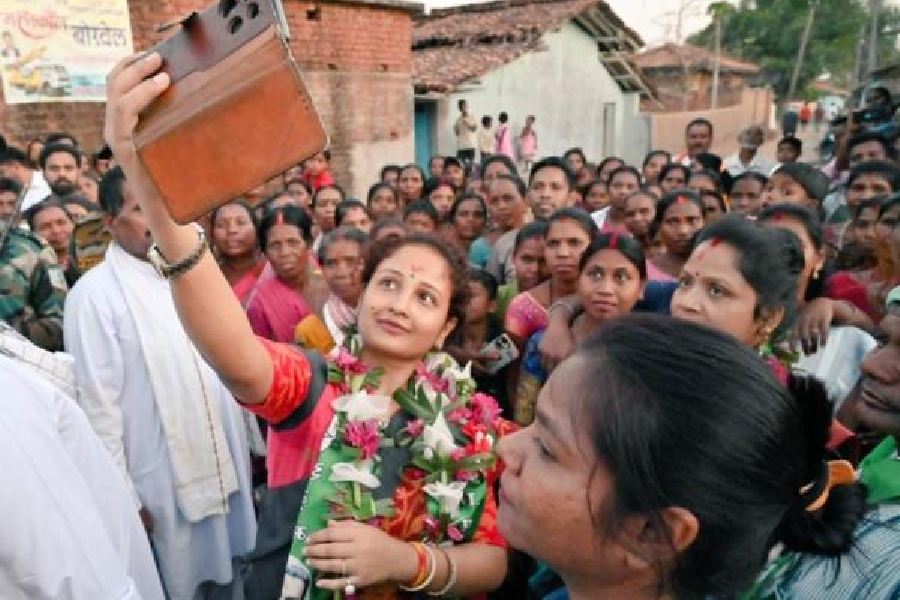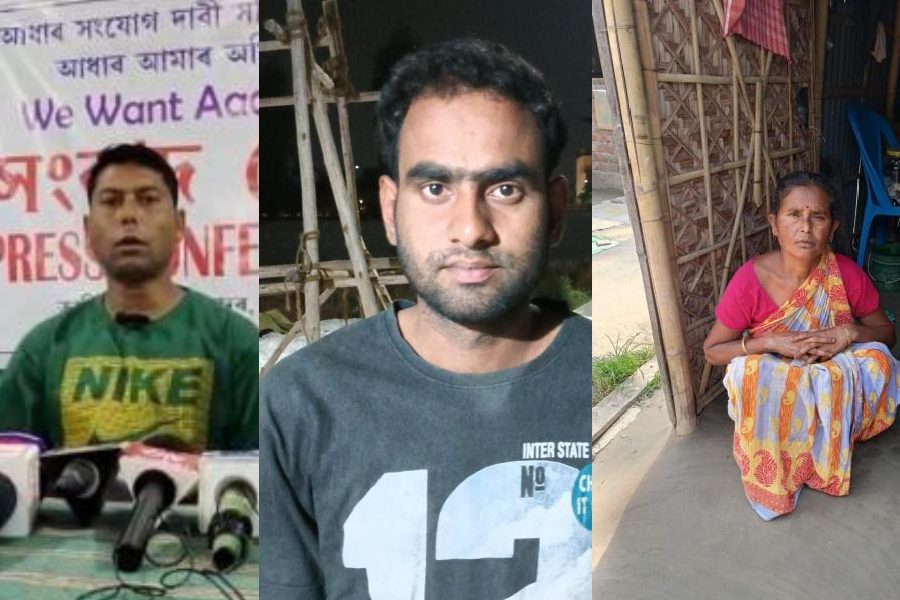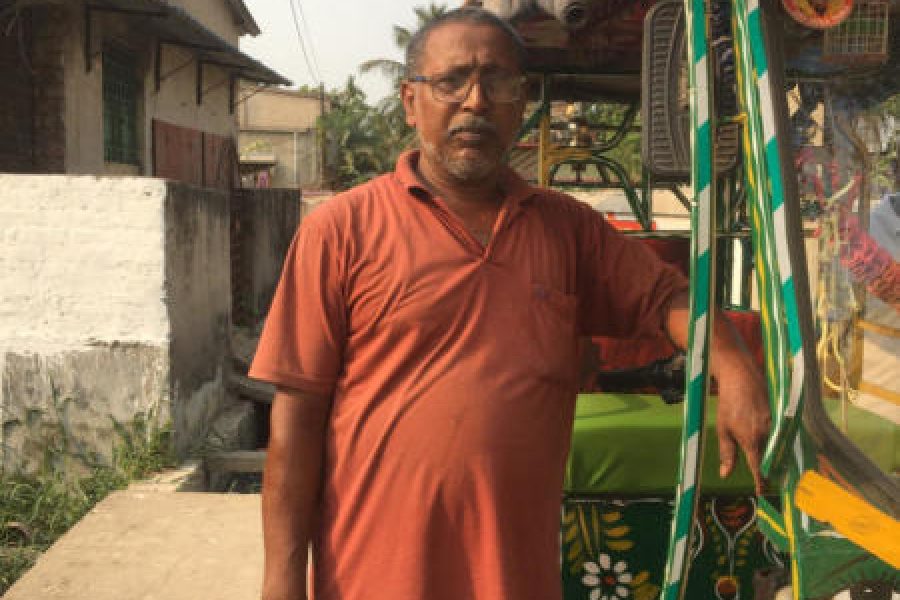A temple in north Kerala has assigned five women artists the job of painting traditional temple art, until then the sole preserve of men in the state.
The women accomplished the task in 18 days spread across January and February. Until then, only men used to be engaged in the artwork locally known as Chanthattam.
The women didn’t think twice when the governing committee of the 300-year-old Mannambrath Devi Kshetram in Vadakara, Kozhikode district, offered them the job.
The women, three of them fine arts students, braved the blazing sun of Kerala to perch themselves on the scaffolding to paint, among others, the Mukhappu — an intricately designed traditional piece that adorns the entrance of most Hindu shrines in the state.
“What is special about this assignment is that it is certainly the first time women have painted the Mukhappu in Kerala,” Ambili Vijayan, who is trained in Kerala’s famous Chumar Chithra Kala, or mural art, told The Telegraph, recounting the experience of painting two shrines in the same temple complex.
The five-member team also had Rajina Radhakrishnan, a professional painter and sculptor, and fine arts students Anaswara, Swathi and Haritha.
Although Kerala is otherwise known for its syncretic culture where all communities participate in each other’s festivals, women’s role in Hindu temple art has been limited to murals.
“The successful competition of this assignment will encourage others to give such jobs to women,” Ambili said.
Not only did the temple committee assign the women a “men-only” task, they also welcomed a hijab-clad fine arts student who had been making a live sketch of her friends painting from outside the periphery of the temple.
“It is so heartening to see the committee members invite her into the temple compound and allow her to freely move around and do her sketches, reminding everyone about the lack of any entry restrictions to the temple,” Ambili said.
Although the temple committee did not set any pre-conditions to the artists, the women voluntarily stayed away during their periods.
“No one asked us not to come during our periods, which they would have anyway not known had we not disclosed it. But since the artists were physically uncomfortable in working during periods, they stayed away for a few days while the others continued to work,” Ambili recalled.
The only precaution the artists took was to refrain from talking about their work on social media while it was on.
“We decided to refrain from posting social media statuses about the work, mainly to avoid any negative attention that could even force us to discontinue,” she said, alluding to the possibility of members of the Hindu Right wing creating problems. But everything went so well that even regular temple visitors stood by and watched in awe while the women painted.
“The local people, especially women, were pleasantly surprised to see us standing on the scaffolding and painting, something they had never seen,” Ambili said.
Ratheesh K.P., a member of the temple committee that assigned the women artists, said they had initially contacted another renowned artist and sculptor.
“We had initially approached Shaji Poyilkavu, who informed us that his friends (the women artists) were keen to take up the job. So we discussed the matter in the committee and agreed to hire them (the women),” he told this newspaper. The temple committee and the locals are impressed with the work.
“We are wholly satisfied with their work and hope this would set a trend for women to be assigned such jobs,” he added.
Rajina, who is based in Kozhikode, termed it an achievement that would inspire many more women, especially youngsters, to break such man-made barriers.
“Credit goes to the temple authorities who encouraged us to the fullest to complete the job and provided all the support,” she told this newspaper.










